Invited Speakers
Plenary Lecture
| Rodney O. Fox | Iowa State University |
| Melany Hunt | Caltech |
| Frédéric Risso | Institut de Mécanique des Fluides de Toulouse |
| Shu Takagi | The University of Tokyo |
Keynote Lecture
| Arezoo Ardekani | Purdue University |
| Panagiota Angeli | University College London |
| Dieter Bothe | Technical University of Darmstadt |
| Marco da Silva | Johannes Kepler University Linz |
| Jochen Fröhlich | Technical University of Dresden |
| Tatiana Gambaryan-Roisman | Technical University of Darmstadt |
| Kosuke Hayashi | Kobe University |
| Shuichiro Miwa | The University of Tokyo |
| Yuji Tasaka | Hokkaido University |
| Zhaosheng Yu | Zhejiang University |
Plenary Lecture
Rodney O. Fox (Iowa State University)Recent Advances in Well-posed Eulerian Models for Polydisperse Multiphase FlowsApril 3, 10:00-10:50, Main Hole |
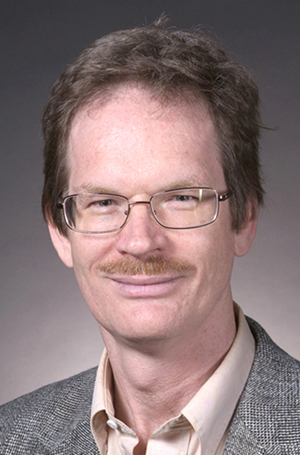
|
Polydisperse multiphase flows arise in many applications, and almost always involve a disperse phase with particles of different sizes, compositions, etc., present over a wide range for volume fractions. In this presentation, I will review recent advances in combining quadrature-based moment methods with a well-posed Eulerian two-fluid model derived from a kinetic theory that includes mass and velocity distributions. This approach relies on formulating a disperse-phase kinetic equation valid from close-packed to dilute conditions, coupled to a modified Navier-Stokes equation for the continuous phase. A critical component of the computational approach for treating polydispersity is the formulation of the numerical fluxes for the mass-velocity moments found from the kinetic equation. For the mass moments, the recently developed generalized quadrature method of moments provides a robust reconstruction of the mass distribution. Then, using the conditional and hyperbolic quadrature method of moments for the mass-conditioned velocity moments of the disperse phase, well-posed spatial fluxes are formulated and implemented in a hyperbolic flow solver. Through numerical examples, we demonstrate that by including added mass and pseudoturbulence, this well-posed modeling approach extends to polydisperse flows with arbitrary material density ratios (e.g., bubbly flows).
Professor Fox joined Iowa State University as the Glenn Murphy Professor of Engineering in 1999, and was the Herbert L. Stiles Professor of Chemical Engineering from 2003-2012. He was promoted to Distinguished Professor in Engineering in 2010. Fox has held visiting professorships in Belgium, Denmark, France, Italy, Switzerland and The Netherlands. From 1987-88, he was a NATO Postdoctoral Fellow at LSGC in Nancy, France. His numerous professional awards include a NSF Presidential Young Investigator Award in 1992 and the ISU Outstanding Achievement in Research Award in 2007. From 2012-14, he was a Marie-Curie Senior Fellow at the Ecole Centrale in Paris, France. In 2015 he was selected as an International Francqui Professor by the Francqui Foundation in Belgium, and awarded a Chaire d’Attractivité at the Université Fédérale Toulouse Midi-Pyrénées, France. In 2016 he was selected for the North American Mixing Forum Award for Excellence and Sustained Contributions to Mixing Science and Practice, and the Shell Particle Technology Forum Thomas Baron Award. In 2022 he was named the Fulbright-Tocqueville Distinguished Chair and D’Alembert Senior Fellow at the University of Paris-Saclay, CentraleSupélec. Professor Fox is a Fellow of the American Physical Society and of the American Institute of Chemical Engineering.
Professor Fox has made numerous ground-breaking contributions to the field of multiphase and reactive flow modeling. The Fox group spearheaded many fundamental advances in the development of novel computational fluid dynamics (CFD) models to overcome specific scientific challenges faced in the chemical and petroleum industries. He developed powerful quadrature-based moment methods (CQMOM, GQMOM, HyQMOM) for treating distribution functions (particle size, bubble size, velocity, etc.). The impact of Fox’s work extends far beyond chemical engineering and touches every technological area dealing with turbulent flow and chemical reactions. His first book, Computational Models for Turbulent Reacting Flows, published by Cambridge University Press (CUP) in 2003, offers an authoritative treatment of the field. His second CUP book in 2013, Computational Models for Polydisperse Particulate and Multiphase Systems, provides a comprehensive treatment of CFD model for disperse multiphase flows. His current research is focused on well-posed multifluid models for polydisperse systems and multiphase turbulent flows.
Melany L. Hunt (California Institute of Technology)Experiments and Modeling of Liquid-Solid Flows with InertiaApril 4, 9:00-9:50, Main Hole |

|
Nearly 70 years ago, R.A. Bagnold published his seminal findings on the rheological properties of liquid-solid suspensions. The Bagnold work provided the basis for many granular and particle flow studies on the transition from the viscous regime to a grain-inertia regime that involves particle collisions; an analysis of the experiments, however, showed the transition was a result of a turbulent transition rather than a transition involving particle collisions. This presentation overviews other studies on the rheology of liquid-solid flows and presents new results from experiments at Caltech. The new experiments involve a coaxial cylindrical rheometer and use the Reynolds number based on particle diameter and the velocity of the moving wall and not on the square of the particle diameter and the shear rate. For Reynolds numbers great than 10, the effective viscosity shows a linear increase with Reynolds number for solid fraction less than 40%; this increase results from inertial effects and not from particle-to-particle collisions. At higher sheer rates, the flow can transition to turbulence with smaller particles suppressing the transition and larger particles enhancing the turbulence. Additional experiments also consider cases with unmatched densities between the fluid and solid phases. The results are compared with recent numerical simulations using the diameter-based Reynolds number.
Melany L. Hunt is the Dotty and Dick Hayman Professor of Mechanical Engineering. Her research work involves transport and mechanics in multiphase systems, including granular material flows, dense liquid-solid flows, fluidized beds, powders, and booming sand dunes. She received her bachelor's degree from the University of Minnesota, Minneapolis and her masters and doctorate from the University of California, Berkeley. At Caltech she has served in a variety of roles, including executive officer of mechanical engineering and vice provost. She has won awards for teaching, research, and mentoring, including Caltech’s 2019 Richard P. Feynman Teaching Prize and the 2022 Agent of Change Award for her efforts around diversity, equity, and inclusion. She was recently elected vice chair of the US National Committee on Theoretical and Applied Mechanics of the National Academies.
Frédéric Risso (Institut de Mécanique des Fluides de Toulouse)On the Fluctuations Generated by a Dispersed PhaseApril 6, 9:00-9:50, Main Hole |
|
The understanding of the random fluctuations generated by the motion of a population of bodies dispersed in a fluid is a fundamental issue for many multiphase configurations, including bubbly flows, droplet emulsions and particulate flows. In this talk, we mainly focus on inertial situations where a wake develops at the rear of the dispersed bodies. From the examination of gravity-driven flows (bubble columns and fluidized beds), the singular properties of the body-induced fluctuations, in terms of statistical moments and spectra, is revealed. It turns out that the dynamics of these fluctuations emerge from collective effects and cannot be derived from the dynamics of a single, or a few, particles. They can neither be understood in the framework of single-phase turbulence. The aim of this lecture is to present the concepts that have been introduced to understand the mechanisms responsible for various specific features, such as anisotropy, exponential tails of probability density functions, and k-3 spectral subrange. The relative importance of each mechanism with the volume fraction, the Reynolds number and the nature of the dispersed bodies will also be discussed, as well as the modeling of the body-induced agitation and its interaction with single-phase flow turbulence.
Frédéric Risso (56 years) is a senior researcher at the CNRS (French National Center for Research). He received his PhD in Fluid Dynamics in 1994 from the National Polytechnique Institute of Toulouse and has been studying multiphase flows at IMFT (Institute of Fluids Mechanics of Toulouse) since then. His research is structured around two main axes: Agitation, mixing and transfers in bubbly flows, droplet emulsions and dense suspensions; Dynamics of fluid interfaces (deformation, breakup and coalescence) involving complex interfacial rheology due to the presence of surfactants or membranes. In this context, he particularly focuses on the understanding of fundamental physical mechanisms from the analysis of original experiments and simulations, with the aim to develop models for applications to chemical processes, geophysics and biological flows. He has published 78 articles in peer-reviewed journal (Google scholar page), supervised 17 PhD and 13 postdocs, and be associated editor of the Int. J. Multiphase Flow (2010-2016).
Shu Takagi (The University of Tokyo)Dynamics of a Rising Bubble and Bubble ClusterApril 7, 9:00-9:50, Main Hole |
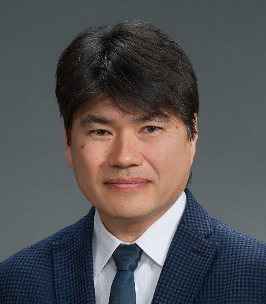
|
The behaviors of a single bubble and bubble clusters are drastically changed by small amounts of surfactant. It is well-known that a bubble in aqueous surfactant solution rises much slower than one in purified water. This phenomenon is explained by the so-called Marangoni effect caused by a nonuniform concentration distribution of surfactant along the bubble surface. More interestingly, this Marangoni effect also influences the lateral migration in the presence of mean shear. These phenomena influence the multiscale nature of bubbly flows and cause a drastic change in the large scale bubbly flow structures. In the present talk, bubble clustering phenomena in upward bubbly channel flows are discussed with the emphasis on the detail description of single bubble behaviors and bubble-bubble interactions. The direct numerical simulations and the PIV measurement were conducted to clarify the spatiotemporal change of flow structures. It is shown that large scale turbulent vortical structures disappears by suppressing the growth of a small vortical structure near the wall, where the quasi 2-dimensional bubble clusters are passing by.
Shu Takagi is a Professor at the Department of Mechanical Engineering and Department of Bioengineering, The University of Tokyo since 2010. He received Doctor of Engineering from the University of Tokyo in 1995. His areas of expertise include numerical simulations and experimental investigations on dispersed multiphase flows, especially bubbly flows and blood cell flows, medical ultrasound, hierarchical integrated simulation of human body, molecular thermo-fluid mechanics and multiscale analysis of thermo-fluid phenomena. He has written over 20 review articles including Annual Review of Fluid Mechanics and has given more than 30 keynote lectures in conferences. He has been contributing as an associate editor of IJMF and journal FLOW. He is currently the President of Japan Society of Multiphase Flows and the vice President of Japan Society of Fluid Mechanics. He is also a IUTAM Congress Committee member and contributing for the international activity in the field of mechanics.
Keynote Lecture
Arezoo Ardekani (Purdue University)Rheology of Concentrated Suspension of ParticlesApril 4, 10:00-10:40, Room 301 |
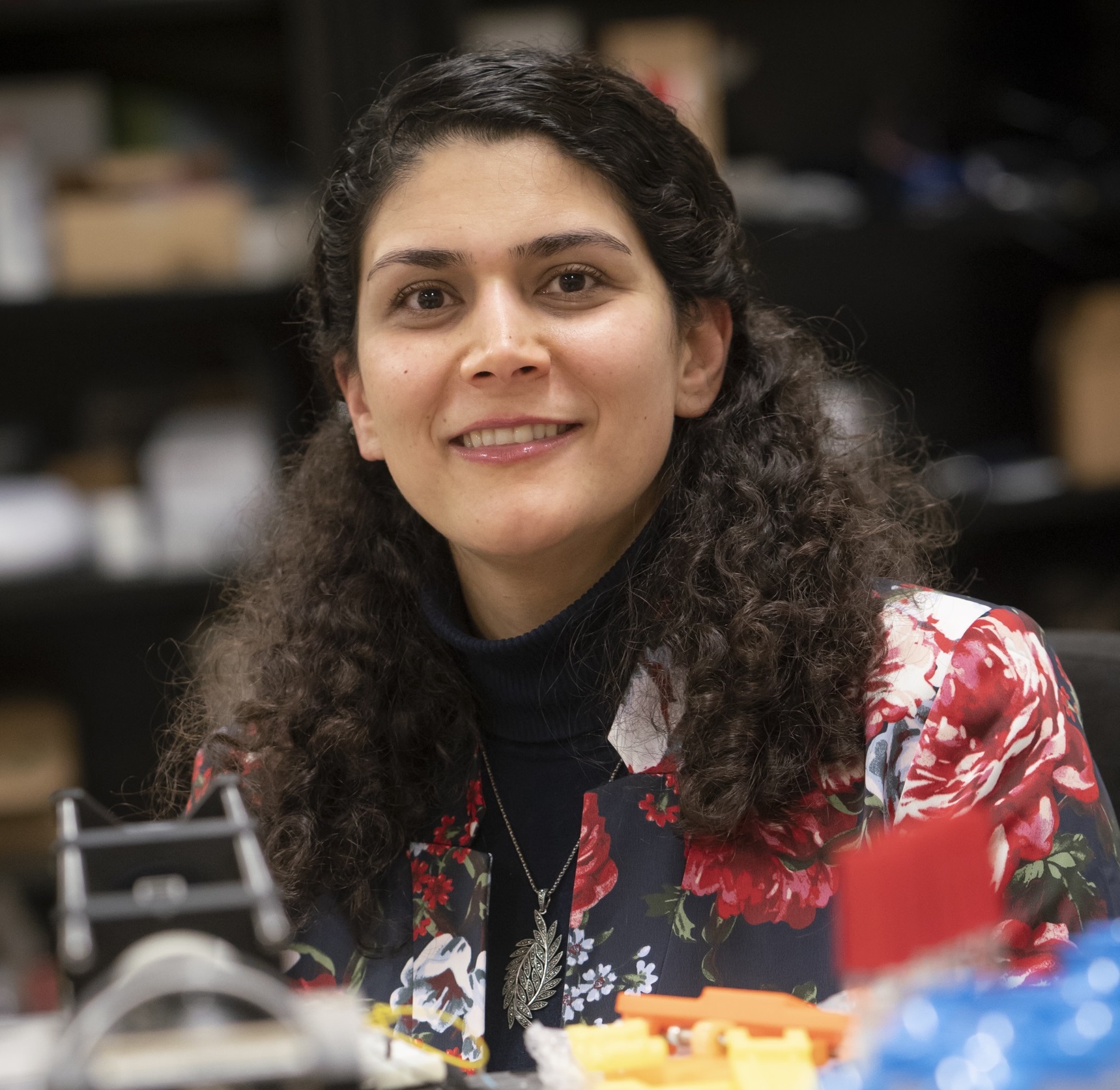
|
Controlling the flow of concentrated particle suspensions is a crucial piece of an unresolved puzzle in many applications, e.g., biofuel production, solar cells, electronic cooling, fiber-reinforced thermoplastics. Unravelling the underlying physics and governing mechanisms that determine such materials' behavior is thus crucial. Understanding the flow behavior, quantifying the particle microstructure, and exploring ways to manipulate it in suspensions are essential to increase the efficiency and throughput of processes involving such dense suspensions of particles. Accurate predictions of rheology provide control over the flow of these materials. We developed experimentally validated and physics-based computational approach to study the flow of dense suspensions near jamming limits and quantitatively determined the role of inter-particle short range interactions on the rheology, the jamming fraction, and the microstructure of dense suspensions.
Dr. Ardekani is a Professor of Mechanical Engineering at Purdue University. Honored with the Presidential Early Career Award for Scientists and Engineers (PECASE) from President Obama, Arezoo has also received an NSF CAREER Award, the Arthur B. Metzner Early Career Award from the Society of Rheology, the Society of Engineering Science Young Investigator Medal, the Sigma Xi Mid-career Research Award, and is named a Purdue University Faculty Scholar. A Fellow of American Physical Society (APS) and American Society of Mechanical Engineers, Arezoo has also received the College of Engineering Faculty Excellence Awards for Graduate Student Mentorship and Early Career Research, the Amelia Earhart Award, and the Society of Women Engineers Award. She received her PhD from University of California Irvine in 2009 and was a Shapiro Postdoctoral Fellow at MIT. Arezoo is an Associate Editor of ASME Applied Mechanics Review, an Editorial Advisory Board Member of International Journal of Multiphase Flow, Journal of Non-Newtonian Fluid Mechanics, Physics of Fluids and Physical Review Fluids and a member of the American Physical Society-Division of Fluid Dynamics (DFD) Executive Committee. She was a co-chair of APS-DFD meeting held in Indianapolis this year.
Panagiota Angeli (University College London)Drop Formation in Microfluidic Channels in the Presence of Surface Active AgentsApril 4, 13:30-14:10, Main Hole |
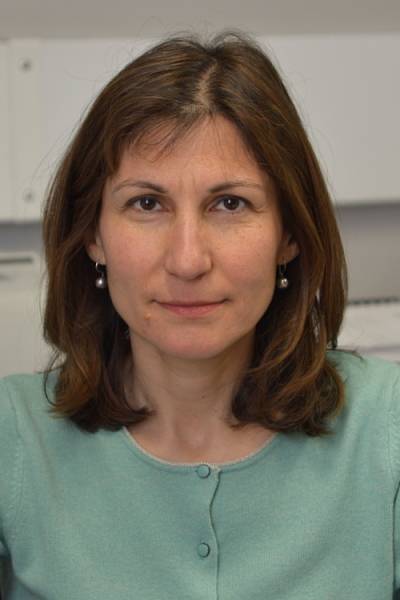
|
Dispersions/emulsions of two immiscible liquids find numerous applications in pharmaceutical and healthcare formulations, food and agrochemicals. In recent years, microchannels have been extensively used to produce emulsions with small, uniform drop sizes. Surfactants and colloidal particles are commonly added to vary the interfacial properties, control the drop size, stabilise the emulsions and influence the final product rheology. The drop size is determined by the droplet break up in the microfluidic channels which is linked to interfacial properties such as interfacial tension and rheology. These depend on the absorption and distribution of the surface active agents to the forming interfaces. Often with surfactants, equilibrium values of interfacial tension are used to correlate the results. As interfaces expand, deform or break up, the interfacial surfactant concentrations will diverge from the equilibrium values, while concentration gradients can also appear, giving rise to Marangoni stresses. In addition, the presence of colloidal particles affects interfacial rheology and drop break up. In the talk, I will discuss the flow patterns and dynamic phenomena occurring during drop formation and break up in microfluidic channels in the presence of surface active agents. The various stages of drop formation will be presented alongside the interface deformation and the local velocity fields, obtained with high sped imaging and particle image velocimetry and complemented by computational fluid dynamics simulations. The distribution of surface active agents at the interfaces is also visualized with fluorescence techniques.
Prof Panagiota Angeli, FIChemE, is a Professor in the Department of Chemical Engineering at UCL, Deputy Head ED&I, and leads the ThAMeS Multiphase group. She obtained a Diploma in Chemical Engineering from the National Technical University of Athens and a PhD on Multiphase Flows at Imperial College London. She specializes on complex multiphase flows particularly those involving two liquid phases. Her research aims to link small scale interactions and interfacial phenomena to the macroscopic behaviour of the complex flows and to the development of predictive models. She has been investigating the effects of surfactants, particles and non-Newtonian rheologies on two-phase microchannel flows, as well as their applications to the analysis and intensification of metal separations, and to the manufacturing of complex formulations. The experimental investigations have been enabled by original and advanced sensing and measurement techniques, such as micro- and high speed Particle Image Velocimetry (PIV) and ultrasound. Prof Angeli’s work has been supported by substantial UK Research Council and European Union grants and by industry. She has been awarded a RAEng/Leverhulme Trust Fellowship, and has participated and chaired UK EPSRC and international (Norway, Sweden, Ireland, Belgium) research funding review panels. She co-chairs the Multiphase Flows Special Interest Group of the EPSRC funded UK Fluids Network and has published about 200 journal papers.
Dieter Bothe (Technical University of Darmstadt)Mass Transfer across Actual Fluid Interfaces - Modeling and SimulationApril 4, 10:00-10:40, Main Hole |
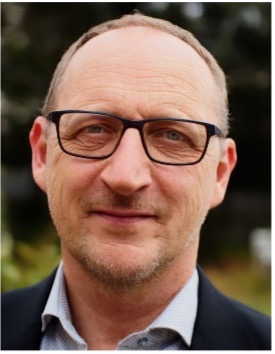
|
Fluid interfaces, such as bubbles, droplets, and liquid films that are out of chemical equilibrium irreversibly exchange mass. These interfaces, as part of real-world multiphase fluid systems, feature many complexities that make them challenging to study. Firstly, the fluid interface is a free, moving, and deformable phase boundary, making the problem inherently nonlinear and geometrically difficult. Introducing surface tension and the related pressure jump, the fluid interface renders the numerical treatment non-trivial even for pure fluids, especially if high density and/or viscosity ratios are present. If the fluid interface carries adsorbed molecules, the resulting Marangoni stresses add further nonlinearities to the system, resulting for instance in non-monotonic rise behavior.
The bulk phases can also lead to complications. For example, in the case of gas bubbles, the ambient liquid is often a multicomponent mixture containing ionic constituents in polar liquids such as water, resulting in intrinsic electrical effects and/or non-Newtonian rheological behavior due to dissolved macromolecules such as polymers. The diffusive transport of solutes is characterized by high Schmidt numbers, often resulting in large Péclet numbers at moderate to large Reynolds numbers. This leads to extremely fine concentration boundary layers, of a thickness possibly down to the Bachelor length scale, requiring specific techniques for accurate numerical treatment, a challenge further tightened if fast chemical reactions occur.
For complex liquids with, say, viscoelastic behavior, the interaction between the fluid interface, acting as an obstacle for the flow kinematics, with the liquid elasticity leads to surprising phenomena like negative wakes, cusp formation, and the well-known velocity jump discontinuity. In comparison to this, the gas phase description is not too involved with possible cross-diffusion and, more demanding, compressibility effects during longer bubble rise. Coming back to contamination by surfactants, the adsorption of surfactant strongly influences local mass transfer rates of, e.g., gaseous components into a liquid phase. Even for stagnant fluids, the partial coverage of the interface with surfactant molecules constitutes a barrier to mass transfer.
The talk will provide an in-depth survey of the state of the art of local mass transfer modeling and computation at actual fluid interfaces, with a focus on recent work on subgrid-scale modeling and the interplay of surfactants and interfacial mass transfer.
Dieter Bothe is a full Professor at TU Darmstadt and head of MMA, the Mathematical Modelling and Analysis lab. He studied math/computer science/physics at U Paderborn, where he graduated in 1993 and obtained his habilitation in mathematics in 2000. From 1999 to 2005, he was head of the group Modelling, Analysis and Simulation of Multiphase Flows at the Institute for Chemical Engineering at U Paderborn. From 2005 to 2009, he held the Chair for Mathematics/CCES at RWTH Aachen. From 2006 he was Co-Director of the Center for Computational Engineering Science there until he accepted a research professorship at TU Darmstadt/Center of Smart Interfaces in 2009. He is an associated editor of the international journal "Nonlinear Analysis: Real World Applications" and serves on the editorial advisory board of the "International Journal of Multiphase Flow". From 2010 to 2017, he was coordinator of the DFG-Priority Programme SPP 1506 "Transport processes at fluid interfaces" and currently is vice coordinator of the DFG-CRC 1194 "Interaction between Transport and Wetting Processes". In 2017 he was assigned as member of the Scientific Advisory Council of TU Darmstadt. Since 2021, he is coordinator of the research profile Topic "Thermo-Fluids & Interfacial Phenomena". His research comprises nonlinear evolution equations, reaction-diffusion bulk-surface systems and transport processes in two-phase flows, where he combines fundamental modeling with mathematical analysis and numerical simulations to analyze, describe and understand processes in the Natural and Engineering Sciences.
Marco da Silva (Johannes Kepler University Linz)Multi-dimensional Electrical Impedance Sensors for Multiphase Flow InvestigationApril 6, 13:30-14:10, Main Hole |
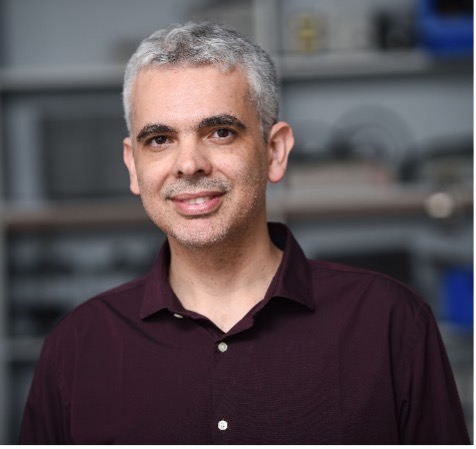
|
Multiphase flow research inevitably requires flow experiments commonly performed in small and medium scale test facilities. More and more, multi-dimensional and non- or minimal invasive measurement and sensors are needed to generate accurate data which in turn support (CFD) flow model development and validation. For this reason, in the past a number of sensors and instrumentation to monitor multiphase flow have been developed. Electrical impedance sensors, in which the measurand causes a variation of an electrical property such as resistance or capacitance, have been successfully applied for the measurement of flow parameters in multiphase mixtures. In this talk, an overview on selected impedance-based measurement techniques and sensors applied to the monitoring of multiphase pipe flows is given. Different sensors, instrumentation and data processing techniques are presented as well as some applications are shown. Hence, beginning with simple impedance probes up to tomographic (multi-electrode) sensors along with some current trends for the further development and optimization of this versatile measurement technique will be described and discussed.
Marco Da Silva received the Dr.-Ing. degree in Electrical Engineering from Dresden University of Technology, Germany, in 2008. Between 2004 and 2009, he worked as a Research Associate at Helmholtz-Zentrum in Dresden-Rossendorf, Germany. In 2010, he joined the UTFPR in Brazil, holding the positions as Assistant and from 2013 until 2022 as Associate Professor at the Department of Electrical and Computer Engineering (CPGEI). Between 2017 and 2022, he also served as Deputy Head of the Multiphase Flow Center at UTFPR. Professor Da Silva has been the Head of the Institute of Measurement Technology at the Johannes Kepler University Linz, Austria since October 2022, conducting research and teaching at the Department of Mechatronics. His research interests include measurement technology, sensors, and instrumentation applied to industrial processes and in special to multiphase flow monitoring. He has authored/co-authored over 200 scientific articles and conference papers and holds five patents.
Jochen Fröhlich (Technische Universität Dresden)Simulation of Particle-laden Flows in Microfluidic Channelsby Jochen Fröhlich and Thomas E. Hafemann April 6, 10:00-10:40, Main Hole |

|
Since the development of microfluidics large efforts have been made to develop tools for the separation of micro-particles from highly concentrated polydisperse suspensions, as observed in blood samples, aiming at disease diagnostics and cell research, for example. From the different available approaches, inertial migration allows the passive, non-labelling continuous processing of large samples of non-buoyant particles by migration to specific locations in the cross section. While flows with low concentration of spherical particles in straight ducts are understood, present challenges result from duct curvature, non-spherical particle shapes, increased concentration, and polydispersity. Fully resolved transient numerical simulations of these processes are employed to investigate these phenomena. In a first part of the talk the physical and numerical modelling procedure will be described. The presentation will then overview recent simulations of such flows addressing the implications of the respective effects. While flow curvature, as generated in microfluidic spirals, for example, enhances focusing through the induced Dean flow, non-spherical particle shapes tend to change the performance of the focusing process by modifying the resulting focusing positions. Furthermore, even at relatively low concentration interactions between the particles can degrade the focusing performance. At higher concentrations the effect is stronger and eventually results in only weak segregation. Polydisperse samples present particular effects resulting from variation of forces with size and displacement of small particles by large ones. The simulation method and the results obtained are relevant for designing corresponding devices.
Jochen Fröhlich studied Mechanical Engineering at RWTH Aachen where he received a diploma degree. Funded by a scholarship of CNRS, he then worked at the University of Nice – Sophia-Antipolis, France where he obtained a PhD in Engineering Sciences. After two post-doctoral positions at the University of Kaiserslautern and Konrad-Zuse-Zentrum Berlin, he moved to the University of Karlsruhe (TH), nowadays KIT, where he submitted his habilitation thesis on Large Eddy Simulation in 2004. Since 2007, Jochen Fröhlich is holding the Chair of Fluid Mechanics at Technische Universität Dresden and since 2010 he is Managing Director of the Institute of Fluid Mechanics at this university. His research interests cover numerical methods, high-performance computing, modelling and simulation of turbulent and multiphase flows, as well as fluid-structure interaction. He received the Harold Schoemaker Award of the International Association for Hydro-Environment Engineering and Research for work on particle-resolved simulations of sediment transport.
Tatiana Gambaryan-Roisman (Technical University of Darmstadt)Interaction between Spreading, Imbibition and Evaporation of Drops on Heated Substrates with Porous Coatingsby Michael Heinz, Imdad Chowdhury, Peter Stephan and Tatiana Gambaryan-Roisman April 3, 11:10-11:50, Main Hole |
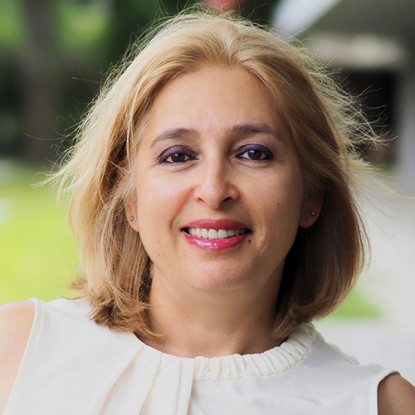
|
Heat and mass transport during drop impact or a gentle deposition onto a heated substrate depends on the surface chemistry, morphology, thermal and mechanical properties of the substrate, as well as on the substrate temperature. In particular, if a substrate is coated with a porous layer of a wettable material, the drop spreading is accompanied by the imbibition of a liquid into the layer. The wetted area is significantly enhanced in comparison with the area which can be covered by a drop spreading over a bare substrate. As a result, the liquid evaporation rate increases and the evaporation time decreases. Understanding the interaction between the liquid spreading, imbibition and evaporation is important both for enhancement of heat transfer in cooling applications and for functionalizing of porous media.
In our experimental studies, substrates manufactured from an infrared-transparent calcium fluoride glass are used. The substrates are coated with a submicrometer black CrN layer and an electrically conductive chromium layer, which is used for heating of the substrate by electrical current. Nanofiber coating layers are applied on top of a chromium layer using electrospinning. The dynamics of drop spreading is captured by a high-speed camera in a side view, the imbibition is observed with a top view camera, and the temperature distribution at the substrate-coating interface is captured by an infrared camera. Based on the transient temperature field, heat flux distribution is determined. The detailed analysis of the experimental data for different thicknesses of the porous layers, different substrate temperatures and different liquids sheds a light on the coupled transport processes.
Tatiana Gambaryan-Roisman received a Master of Science and Doctor of Science degrees in Mechanical Engineering from the Technion – Israel Institute of Technology. She worked as a postdoctoral fellow at the Institute of Glass and Ceramics, University of Erlangen-Nuremberg and after that changed to the Institute of Technical Thermodynamics at the Department of Mechanical Engineering, Technical University of Darmstadt, where she defended a Habilitation thesis in 2008 and was promoted to Apl. Professor in 2015.
In 2002, Tatiana Gambaryan-Roisman was enrolled in the Emmy Noether-Program of German Research Foundation (DFG) and founded a Junior Research Group “Evaporation of thin films from structured surfaces”. She was one of the founding members of the Excellence Cluster “Center of Smart Interfaces: Understanding and Designing Fluid Boundaries” (CSI) established at TU Darmstadt. In the years 2014-2017 T. Gambaryan-Roisman has coordinated the Marie Curie Initial Training Network “Complex wetting Phenomena” (CoWet). She is currently coordinating an Innovative Training Network “Dynamics of dense nanosuspensions: a pathway to novel functional materials“ (nanoPaInt). Tatiana Gambaryan-Roisman heads the research group “Interfacial transport and complex wetting” at the Institute for Technical Thermodynamics at the Technical University of Darmstadt.
Kosuke Hayashi (Kobe University)Lift Correlations of Ellipsoidal Bubbles in Low and High Viscosity LiquidsApril 6, 10:00-10:40, Room 301 |
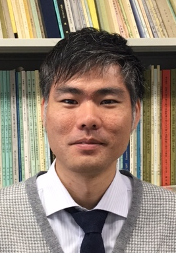
|
Auton (1987) derived the lift coefficient of a spherical bubble at infinite bubble Reynolds number from the distribution of vorticity affected by a weak incident shear flow. Legendre and Magnaudet (1998) then proposed a lift correlation for finite Reynolds numbers, in which the viscous contribution decreases the lift coefficient and its functional form is similar to that of the drag coefficient. Legendre (2007) pointed out the relation between the vorticity generated at the bubble surface and the drag. This keynote lecture introduces a modelling of the lift coefficient of ellipsoidal bubbles, which experience negative lift due to shape deformation, by connecting the drag expressed in terms of the vorticity and the negative lift component. This strategy works well both for bubbles in viscous liquids and those in water. The critical bubble diameter for lift reversal will then be discussed using the developed lift correlations. The Ohnesorge and capillary numbers are good candidates to express the critical diameter in low and high viscosity liquids, respectively, and, interestingly, the critical diameter lies within a narrow range, i.e., 3 to 5 mm, for a wide range of the Morton number. The effects of surfactant on the lift coefficient will also be discussed. This research series has been carried out in a collaboration between IMFT (Prof. D. Legendre), HZDR (Dr. D. Lucas and Dr. H. Hessenkemper), and Kobe University (Profs. A. Tomiyama and Hayashi).
Kosuke Hayashi is an associate professor at the Graduate School of Engineering, Kobe University, Japan, since 2012. He received Doctor of Engineering from Kobe University in 2007. He was formerly an assistant professor (2007-2008), then lecturer (2008-2009) at the Kobe City College of Technology, and assistant professor at Kobe University (2009-2012). His research interests include experiments and numerical simulations of bubbles and drops, and effects of surface-active agents on the bubble and drop dynamics, especially the drag and lift forces. He has published 120 peer-reviewed journal papers and devoted two chapters in Encyclopedia of Two-Phase Heat Transfer and Flow III, Macro and Micro Flow Boiling and Numerical Modeling Fundamentals (2018).
Shuichiro Miwa (The University of Tokyo)The Role of Nuclear Thermal-hydraulics towards Carbon Neutrality: from Drift-flux Model to Deep LearningApril 6, 13:30-14:10, Room 301 |
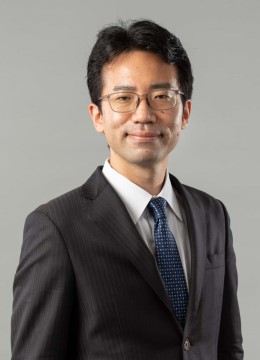
|
In analyzing gas-liquid two-phase flow, which consists of various spatio-temporal scales in a complex manner, it is necessary to utilize appropriate analysis methods and models depending on the length scale of the target. In the past 50 years, research in nuclear thermal-hydraulics has contributed considerably to gas-liquid two-phase flow modeling, ranging from Zuber’s Drift-flux model to Ishii’s two-fluid model and interfacial area transport and so on. Furthermore, a recent trend in data-driven modeling approaches, including deep learning, shows quite promising performance in interpreting the complex nature of two-phase flow structure in a completely new way. In this keynote lecture, the presenter’s recent research on tight-lattice rod-bundle two-phase flow, flow-induced vibration, and flow regime identification method using machine learning will be introduced in various modeling approaches.
Shuichiro Miwa is an associate professor at the Nuclear Professional School at the University of Tokyo. He was born in Kobe, Japan, and spent 12 years in Seoul, Korea, since elementary school. He obtained his B.S. in Civil/ Environmental Engineering, M.S., and Ph.D. in Nuclear Engineering from Purdue University, with research in two-phase flow-induced vibration under the supervision of Profs. Takashi Hibiki and Mamoru Ishii. After obtaining his Ph.D. in 2012, he held the position of assistant professor and then associate professor at Hokkaido University. He has held his present position since 2021. His research interests span fundamental two-phase flow experiments and modeling, reactor safety, an adaptation of machine learning towards thermal-hydraulics, and Fukushima Daiichi decommissioning.
Yuji Tasaka (Hokkaido University)Ultrasonic Spinning Rheometry Test for Multiphase Flow StudiesApril 3, 11:10-11:50, Room 301 |
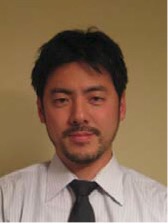
|
Ultrasonic spinning rheometry (USR), which utilizes velocity profile information of cylindrical shear flows measured by ultrasonic velocity profiling (UVP) to determine rheological properties of complex fluids, has been established for evaluating effective viscosity of bubbly liquids in unsteady shear flows simulating shear environment in turbulent boundary layers. USR has high applicability for general multiphase fluids including, for example, fluid foods, which are out of range of evaluations by conventional rheometers utilizing axial torque measurement. Analysis using instantaneous velocity profiles determined by UVP on the equation of motion allows to evaluate local effective values of rheological properties such as shear-dependent viscosity and viscoelasticity at local share rates unlike apparent viscosity for a bulk shear rate evaluated by the conventional rheometers. In this talk, principle of USR and two different analyses, effective viscosity analysis and local linear viscoelastic analysis, are summarized, and efficacy of the methods are explained. Following practical applications of USR for general complex fluids including an oil-water mixture, recent findings on rheological properties of suspensions under unsteady shear through the measurement on bubbly liquid, particle suspensions, and slurries are introduced.
He finished his Ph.D. project entitled “Natural convection induced by internal heat source” in Graduate School of Engineering, Hokkaido University in 2005. After the Ph.D. course he took assistant professor position following two-years research associate contract in the same school. Later in 2011 he has been promoted to associate professor in the research group of Laboratory for Flow Control in Hokkaido University. He also had oversea research experiences in University of Manchester (2008), Helmholtz Centre at Dresden-Rossendorf (2016), and University of Normandy (2017) as a visiting (guest) researcher. His original research interests are flow transition phenomena including natural convections, and developments of measurement tools for this purpose. And recently, the interests have been extended to flow transitions in multiphase media as a frontier of the classical research topics, with development of ultrasonic spinning rheometry.
Zhaosheng Yu (Zhejiang University)Turbulence Modulation by Heavy Finite-size Particles in Vertical Channel Flows and Development of Two-fluid Models from Interface-Resolved SimulationsApril 4, 13:30-14:10, Room 301 |
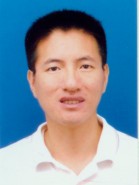
|
In this talk, I introduce our recent works on the particle-turbulence interactions in vertical channel flows and the development of related multiphase flow models based on interface-resolved direct numerical simulations. First, the results on the modulation of turbulence intensity by heavy finite-size particles in upward channel flow at different particle Reynolds numbers, bulk Reynolds numbers, particle sizes, density ratios and particle volume fractions are presented. The criteria of the turbulence enhancement or attenuation are provided for the total turbulence intensity in the channel and the turbulence intensity at the channel center, respectively, and both are shown to agree well with the experimental data in the literature. Then, new drag correlations are developed based on our DNS data of particle sedimentation in a periodic domain and upward turbulent channel flows. A drift velocity model is established to obtain the effective slip velocity from the interphase mean velocity difference for the vertical turbulent channel flow. Finally, correlations for the interfacial terms in the fluid Reynolds stress equations and the dissipation rate equation are established for particle-laden flows based on our DNS data of particle sedimentation in a periodic domain. The results show that the Reynolds stress model with the proposed interfacial term correlations can quantitatively predict particle-induced turbulence enhancement or suppression in vertical channel flows.
Zhaosheng Yu is currently a professor in the department of Mechanics at Zhejiang University. He received the B.S. and M.S. degrees from Zhejiang University, China, in 1996 and 1999, respectively, and the Ph.D. degree from the University of Sydney, Australia, in 2004. He was a Postdoctoral research fellow in the University of Twente, Netherlands, and then in IFP, France, from 2003 to 2006. He has been working at Zhejiang University since 2006, and was promoted to associate and full professor in 2006 and 2012, respectively. He serves as head of the Fluid Engineering Institute at Zhejiang University and head of the multiphase flow professional group in Chinese Society of Theoretical and Applied Mechanics. His current research interests include the mechanisms and modeling of the multiphase flows based on fully-resolved direct numerical simulations. He has published more than 90 peer-reviewed papers (including 15 JFM papers) with over 2800 Google scholar citations.